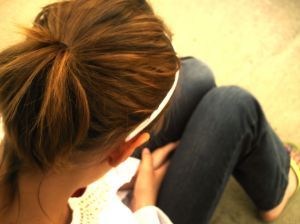Joseph Conrad’s Heart of Darkness, along with its film adaptation, Apocalypse Now, tells the story of a man who comes to realize that humans are naturally evil. Through setting, imagery, symbolism, and plot, both the novel and the film express the unnerving theme that evil is embodied by the human race.
Both Heart of Darkness and Apocalypse Now are divided into three distinct parts: the beginning, the journey up the river, and the meeting of Kurtz. Together, these three sections of the stories represent the process of self-understanding. The beginning, in both cases, represents the questioning by Marlow and Willard of human nature and of their own persons. Both characters question everything around them, which is the ultimate catalyst for the beginning of self-discovery.
The second part of the stories revolves around surface realities. In this part, the main characters’ accepted beliefs and ideas are constantly torn down until they end up believing the exact opposite of what they did in the beginning. These surface realities, things that appear to be true but collapse under close examination, are predominant in both works. In Heart of Darkness, Marlow has to confront the issue of colonization in this manner, eventually understanding that while the Europeans are pressing their civilization on the Africans, it is truly the Europeans who are in need of a societal reform. In the same way, Willard comes to realize that perhaps the Americans that are intervening in other countries’ affairs, which he is so adamantly in support of at the beginning, is not necessarily the greatest good. Both of these cases draw parallels to the surface reality that humans are basically good, which, on close inspection, subsides to the realization that it is evil that drives the human race. This part of the book and the film takes place simply traveling up a river; this journey represents the metaphysical journey of introspection, ultimately ending at self-understanding.
The third part of the stories, when Marlow and Willard finally meet Kurtz, represents true enlightenment, the end of the journey of introspection. Kurtz represents the ultimate evil that all humans posses and the idea that humans are basically evil. While the film ends at this point, the novel continues on to describe how Marlow lies to Kurtz’ friends in Europe, an attempt to protect those who are still innocent from the knowledge of intrinsic human evil that will corrupt them.
While this specific imagery is not present in the film, Conrad uses two descriptors that set the tone for the entire novel: the red eyed devil and the flabby eyed devil. The red eyed devil represents active evil. This is obvious malevolence, evident in actions and wrongdoings. The flabby eyed devil is representative of passive evil, which Conrad argues is the purest form of evil. Passive evil does not act out of wickedness, but rather does nothing to stop it. It is on account of the existence of the flabby eyed devils that red eyed devils thrive. In the beginning of the stories, Marlow and Willard are akin to the flabby eyed devil. They are only following orders, whether those orders are to further the colonization of the Congo or to aid in the war efforts. Neither man questions what is to be done, but act as instruments through which the evil forces, the red eyed devils, can achieve their ends. By the end of their journeys, when they have concluded that the human race is evil, they are transformed into red eyed devils, still evil, but now in control of what unrighteous acts they commit.
The overall intended meaning of both Heart of Darkness and Apocalypse Now, is just what Marlow and Willard discover: that human kind is basically evil. Once a person realizes this, the freedom of unrestrained choice is no longer a possibility and each enlightened person must live and act with the knowledge that they do what they do because they are not good beings. This realization of ultimate evil is “the horror” that Kurtz speaks of with his dying breath.

